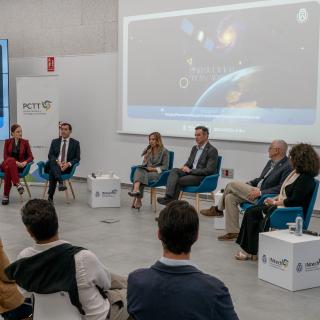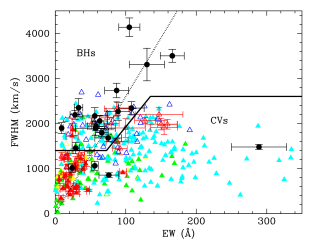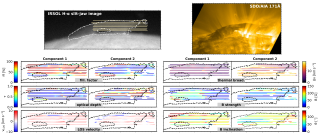A team of astronomers from the National Astronomical Observatory of Japan (NAOJ), with participation by the Instituto de Astrofísica de Canarias (IAC) have tested a method for reconstructing the state of the early Universe applying it to 4,000 simulated universes. To do so they used the ATERUI II supercomputer, at the Japanese observatory and the fastest in the world dedicated to astronomical simulations.
By doing this, the researchers have been able to set better constraints on Inflation and reduce the observing time needed to distinguish between various theories of this process, one of the most mysterious and important processes postulated by modern Astronomy. This study has been published in the journal Physical Review D.
Just after coming into existence 13,800 million years ago, the Universe suddenly increased its size by a factor of a billion in less than one billionth of a billionth of a microsecond; but nobody knows why. This burst of inflation must have caused fluctuations in the primordial density which would have affected the formation and the distribution of the galaxies. For this reason, mapping the distribution of the galaxies could serve to reject those models of inflation which do not produce the observed data.
However, there are other processes which also affect the distribution of the galaxies, which makes it hard to obtain information about Inflation directly from observations of the large scale structure of the Universe, the cosmic web formed by innumerable galaxies. Specifically, the growth of clusters of galaxies driven by gravity could blur the fluctuations in the primordial density.
For that reason, the team directed by Masato Shirasaki, Assistant Professor in the NAOL and in the Institute of Mathematical Statistics (ISN, its acronym in English) of Japan, had the idea of applying a “reconstruction method” to run the clock backwards, and eliminate the effect of gravity on the large scale structure. To do this they used ATERUI II, with which they created 4,000 simulated universes, which evolved with gravity-driven growth. Afterwards, they applied this method to see if they had reconstructed correctly the initial state of the simulations, and found that they could correct the gravitational effects, and improve the restrictions on the fluctuations in the primordial density.
“We discovered that it is very efficient”, explained Shirasaki. “Using this method we could verify inflation theories with around one tenth of the normal quantity of data, which would reduce the time for the observations needed in the upcoming missions for the study of galaxies, such as SuMIRe, on the Subaru Telescope”.
“We are researching techniques which will allow us to elucidate the physical mechanisms involved in cosmic Inflation, very close to the instant when the Universe was created”, explains José Alberto Rubiño Martín, a researcher at the IAC. “In addition this study reflects a long tradition within the IAC of collaboration with Japan. Another example of this collaboration is the GroundBIRD experiment at the Teide Observatory, a telescope which is studying the polarization of the Cosmic Microwave Background, the oldest light in the Universe, which comes from an epoch closest to its origin”.
“These reconstruction techniques are very important for the exploitation of all the cosmic information found in galaxy surveys such as DESI, EUCLID and JPAS, in which we are participating from the IAC”, adds Francisco-Shu Kitaura, an IAC researcher who has taken part in this work.
Article: Masato Shirasaki, Naonori S. Sugiyama, Ryuichi Takahashi and Francisco-Shu Kitaura. “Constraining Primordial Non-Gaussianity with Post-reconstructed Galaxy Bispectrum in Redshift Space”. Physical Review D, January 4, 2021. DOI: https://journals.aps.org/prd/abstract/10.1103/PhysRevD.103.023506
Press releases:
- Center for Computational Astrophysics (CfCA): https://www.cfca.nao.ac.jp/en/pr/20210216
- National Astronomical Observatory of Japan (NAOJ): https://www.nao.ac.jp/en/news/science/2021/20210216-cfca.html
Contact at the IAC:
- Francisco-Shu Kitaura: fkitaura [at] iac.es (fkitaura[at]iac[dot]es)



